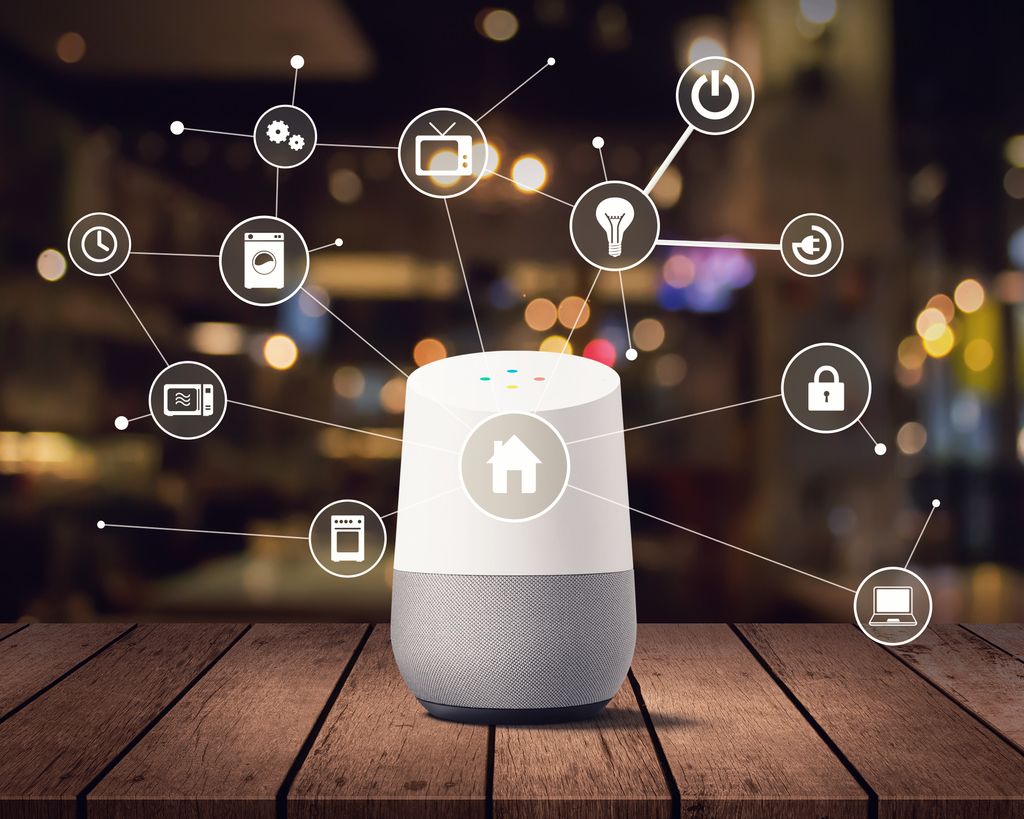Home automation has revolutionized the way we live, providing convenience, comfort, and security. In this article, we will explore the most useful home automation tools for modern living. From smart thermostats that efficiently control the climate to voice assistants that enable hands-free home management, and smart security systems that protect your home, we will cover it all. So, let’s dive in and discover the key takeaways from each of these home automation tools.
Key Takeaways
- Smart thermostats offer efficient climate control and energy savings.
- Top smart thermostat brands include Nest, Ecobee, and Honeywell.
- Installation and setup guides are available to help you easily set up a smart thermostat.
- Voice assistants like Amazon Alexa and Google Assistant provide hands-free control over your smart home devices.
- Integrating voice assistants with smart home devices allows for seamless automation and control.
Smart Thermostats: Efficient Climate Control
Benefits of Smart Thermostats
Smart thermostats offer several benefits that can greatly improve your home’s climate control:
-
Energy savings: Smart thermostats are designed to optimize energy usage by automatically adjusting temperature settings based on your preferences and occupancy patterns. This can result in significant cost savings on your energy bills.
-
Remote control: With a smart thermostat, you can easily control your home’s temperature from anywhere using your smartphone or voice commands. This allows you to adjust the temperature even when you’re not at home, ensuring comfort and energy efficiency.
-
Learning capabilities: Many smart thermostats have learning algorithms that adapt to your schedule and preferences over time. They can automatically adjust temperature settings based on your daily routines, saving energy without sacrificing comfort.
-
Integration with other smart home devices: Smart thermostats can be integrated with other smart home devices, such as voice assistants and smart lighting systems. This allows for seamless automation and control of your entire home.
-
Energy usage insights: Smart thermostats provide detailed energy usage reports, allowing you to track and analyze your energy consumption. This can help you identify areas where you can further optimize energy usage and reduce costs.
By taking advantage of these benefits, smart thermostats can greatly enhance your home’s climate control and energy efficiency.
Top Smart Thermostat Brands
When it comes to smart thermostats, there are several top brands that offer innovative features and reliable performance. These brands have established themselves as leaders in the industry, providing homeowners with advanced climate control solutions. Here are some of the top smart thermostat brands to consider:
- Nest: Known for its sleek design and intuitive interface, Nest thermostats are popular for their learning capabilities and energy-saving features.
- Ecobee: Ecobee thermostats are known for their room sensors, which allow for more precise temperature control in different areas of the home.
- Honeywell: Honeywell offers a wide range of smart thermostats, catering to different budgets and needs. Their thermostats are known for their reliability and compatibility with various HVAC systems.
When choosing a smart thermostat, it’s important to consider factors such as compatibility with your existing HVAC system, ease of installation, and the specific features that are important to you. By selecting a thermostat from one of these top brands, you can ensure that you’re investing in a high-quality and reliable product.
Installation and Setup Guide
Setting up a smart thermostat is a straightforward process that can be completed in a few simple steps. Here’s a step-by-step guide to help you get started:
-
Check compatibility: Before purchasing a smart thermostat, make sure it is compatible with your HVAC system. Some thermostats may require a C-wire for power.
-
Turn off power: Before installing the thermostat, turn off the power to your HVAC system at the circuit breaker to ensure safety.
-
Remove the old thermostat: Carefully remove the old thermostat from the wall, taking note of the wire connections.
-
Install the new thermostat: Follow the manufacturer’s instructions to install the new thermostat, connecting the wires according to the labeled terminals.
-
Connect to Wi-Fi: Once the thermostat is installed, connect it to your home’s Wi-Fi network using the provided app or instructions.
-
Set up the app: Download and install the manufacturer’s app on your smartphone or tablet. Follow the app’s instructions to create an account and connect the thermostat.
-
Configure settings: Use the app to configure your desired temperature settings, schedule, and any additional features offered by the smart thermostat.
Remember to refer to the manufacturer’s instructions for any specific details or troubleshooting tips during the installation process.
Voice Assistants: Hands-Free Home Management

How Voice Assistants Work
Voice assistants are intelligent virtual assistants that use natural language processing and machine learning algorithms to understand and respond to voice commands. They are designed to perform a wide range of tasks, from answering questions and providing information to controlling smart home devices and playing music. Artificial intelligence and voice recognition technologies are at the core of voice assistants, enabling them to accurately interpret and execute commands.
- Voice assistants rely on wake words or activation phrases to start listening for commands. Common wake words include “Hey Siri,” “Alexa,” and “OK Google.” Once the wake word is detected, the voice assistant begins processing the following voice input.
- Voice assistants use natural language processing to analyze and understand the meaning behind spoken commands. They can interpret complex sentences, handle context, and even recognize different accents and dialects.
- Machine learning algorithms enable voice assistants to improve their accuracy and performance over time. They learn from user interactions and adapt to individual preferences and speech patterns.
Tip: To ensure optimal performance, place your voice assistant in a central location where it can easily hear your commands and minimize background noise.
Voice assistants have become increasingly popular in modern homes, offering convenience and efficiency in managing various tasks. Whether it’s controlling smart devices, setting reminders, or getting weather updates, voice assistants have revolutionized the way we interact with technology.
Popular Voice Assistant Devices
Voice assistants have become increasingly popular in modern homes, offering a convenient and hands-free way to manage various tasks. These devices use natural language processing and artificial intelligence to understand and respond to voice commands. With a voice assistant, you can control your smart home devices, play music, get weather updates, set reminders, and much more. Some of the most popular voice assistant devices on the market include:
- Amazon Echo: Powered by Alexa, the Amazon Echo offers a wide range of features and compatibility with various smart home devices.
- Google Home: Google Home is powered by the Google Assistant and provides seamless integration with Google services and products.
- Apple HomePod: The Apple HomePod uses Siri as its voice assistant and offers excellent sound quality and compatibility with Apple devices.
Integrating voice assistants with your smart home devices allows for a more streamlined and efficient home automation experience. With just a simple voice command, you can control multiple devices and access information instantly.
Integrating Voice Assistants with Smart Home Devices
Integrating voice assistants with smart home devices allows for seamless control and automation of various functions within your home. With voice commands, you can easily adjust the lighting, temperature, and even play your favorite music without lifting a finger. Voice assistants like Amazon Alexa and Google Assistant are designed to understand natural language and respond to your voice commands. They can be integrated with a wide range of smart home devices, including smart lights, smart thermostats, and smart speakers. Here are some key benefits of integrating voice assistants with smart home devices:
- Convenience: Voice control eliminates the need to manually operate devices, making it easier and more convenient to manage your smart home.
- Hands-free operation: With voice assistants, you can control your smart home devices simply by speaking, allowing for a hands-free experience.
- Seamless integration: Voice assistants can be easily connected to various smart home devices, creating a unified and interconnected ecosystem.
Tip: When integrating voice assistants with smart home devices, make sure to check compatibility and follow the setup instructions provided by the manufacturer.
By integrating voice assistants with smart home devices, you can enjoy a more streamlined and efficient home automation experience.
Smart Security Systems: Protecting Your Home

Features of Smart Security Systems
Smart security systems offer a range of features that enhance the safety and protection of your home. These features include:
- Motion detection: Smart security systems use advanced motion sensors to detect any movement in and around your home, alerting you to potential intruders.
- Video surveillance: Many smart security systems come with built-in cameras that allow you to monitor your home remotely. You can view live video feeds and even receive alerts when the cameras detect activity.
- Remote access: With a smart security system, you can access and control your home security from anywhere using your smartphone or tablet. This means you can arm or disarm the system, view camera feeds, and receive notifications even when you’re not at home.
- Smartphone alerts: Smart security systems can send instant alerts to your smartphone whenever a security event occurs. This allows you to take immediate action and notify the authorities if necessary.
These features make smart security systems a valuable addition to any home, providing peace of mind and enhanced security.
Choosing the Right Security System
When it comes to choosing the right security system for your home, there are several factors to consider. Budget is an important consideration, as security systems can vary greatly in price. It’s also important to think about the size of your home and the level of security you require. Some systems offer basic monitoring, while others provide more advanced features such as video surveillance and smartphone integration. Additionally, you’ll want to consider whether you prefer a DIY installation or if you would prefer to hire a professional. Here are a few key points to keep in mind:
- Assess your security needs and determine the level of protection you require.
- Research different security system brands and compare their features and prices.
- Consider the long-term costs, including monthly monitoring fees and any additional equipment you may need.
- Read customer reviews and ratings to get an idea of the system’s reliability and performance.
Tip: Before making a final decision, it’s a good idea to consult with a security professional who can provide personalized recommendations based on your specific needs and budget.
DIY vs Professional Installation
When it comes to installing a smart security system, homeowners have the option to either do it themselves (DIY) or hire professionals for the job. DIY installation offers the advantage of cost savings and the flexibility to customize the system according to individual needs. However, it requires some technical knowledge and can be time-consuming. On the other hand, professional installation ensures a hassle-free setup and expert guidance throughout the process. It may come at a higher cost, but it provides peace of mind and professional-grade security.
To help you make an informed decision, consider the following factors:
- Technical expertise: DIY installation requires a basic understanding of technology and the ability to follow instructions. Professional installation eliminates the need for technical know-how.
- Time commitment: DIY installation may take longer as you need to research, purchase, and set up the system yourself. Professional installation saves time and ensures a quick and efficient setup.
- System complexity: If you have a large property or complex security needs, professional installation can ensure that all aspects of your security system are properly addressed.
Remember, whether you choose DIY or professional installation, the most important thing is to have a reliable and effective security system in place to protect your home and loved ones.
Conclusion
In conclusion, smart home automation tools have revolutionized modern living by providing efficient and convenient solutions for various aspects of home management. From smart thermostats that optimize climate control to voice assistants that enable hands-free operation, and smart security systems that enhance home security, these tools offer a range of benefits. Whether it’s saving energy, simplifying daily tasks, or ensuring the safety of your home, there are numerous options available from top brands. With easy installation and setup guides, homeowners can quickly integrate these tools into their homes. Whether you choose to go the DIY route or opt for professional installation, the possibilities for enhancing your home with automation are endless. Embrace the future of living with these innovative tools and experience the convenience and peace of mind they bring.
Frequently Asked Questions
1. How do smart thermostats help in saving energy?
Smart thermostats help in saving energy by automatically adjusting the temperature based on occupancy, detecting when you’re away and adjusting accordingly, and providing energy usage reports to help you optimize your settings.
2. Can I control my smart thermostat remotely?
Yes, most smart thermostats can be controlled remotely through a smartphone app or via voice commands with a compatible voice assistant.
3. Are smart thermostats compatible with all HVAC systems?
Smart thermostats are compatible with most HVAC systems, but it’s important to check the compatibility requirements of the specific smart thermostat model and your HVAC system before purchasing.
4. How long does it take to install a smart thermostat?
The installation time for a smart thermostat can vary depending on the complexity of your HVAC system and your familiarity with electrical work. It can take anywhere from 30 minutes to a couple of hours.
5. Can smart thermostats learn my temperature preferences?
Yes, many smart thermostats have learning capabilities and can adapt to your temperature preferences over time. They can also create personalized schedules based on your usage patterns.
6. Are smart thermostats secure?
Smart thermostats have built-in security features to protect your data and prevent unauthorized access. It’s important to choose a reputable brand and follow best practices for securing your smart home devices.




